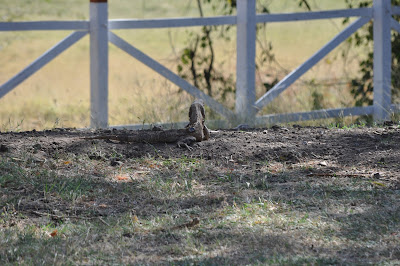 |
| Base Station location map. |
At some point, our testing had to end, parameter decisions needed to be made, and the system to move from enclosed indoor place on to live animals in their habitat.
Base Stations were located near the group of animals we planned to tag and monitor. Two weeks of calibrations, a few days for percolation of plans, and we were ready to collect real data.
 |
| Solar Encounternet tag |
Next task was trapping eight iguanas -- and luck was with us! We managed a dominant and subordinate male, and six females of varying personalities. Some are bold while others much more shy. The group, tagged in less than 12 hours, went live on 5 February 2016.
Another stream of issues: would the tags stay on the iguanas? Would we see lizards itching at the tags, suggesting they were annoying and changing their behavior?
The tags are powered by solar panels with the expectation that the natural basking behavior of a Spiny-Tailed Iguana would keep them charged -- would they really work that way?
Would the iguanas visit areas near enough to base stations to ensure proximity log downloads?
Will the raw data make any sense?
Like all new endeavors, getting over one hurdle simply means time to get ready for the next mess.
To save battery power, tags enter a "sleep mode" at the end of an iguana day, and the Base Stations follow an hour latter. This is reversed in the morning. I set clocks, download logs, and check battery levels starting at 5:30 am; tags awake at 6:00 am.
For the first week, it's important to see what Bases are being used by which iguanas, and making sure all animals are downloading interaction logs. We are mostly in good shape except for one iguana who does not seem to have come out of a hide in a couple of days. Tomorrow the hunt is on!
 |
| Rusty, our dominant male, wearing his tag. |











